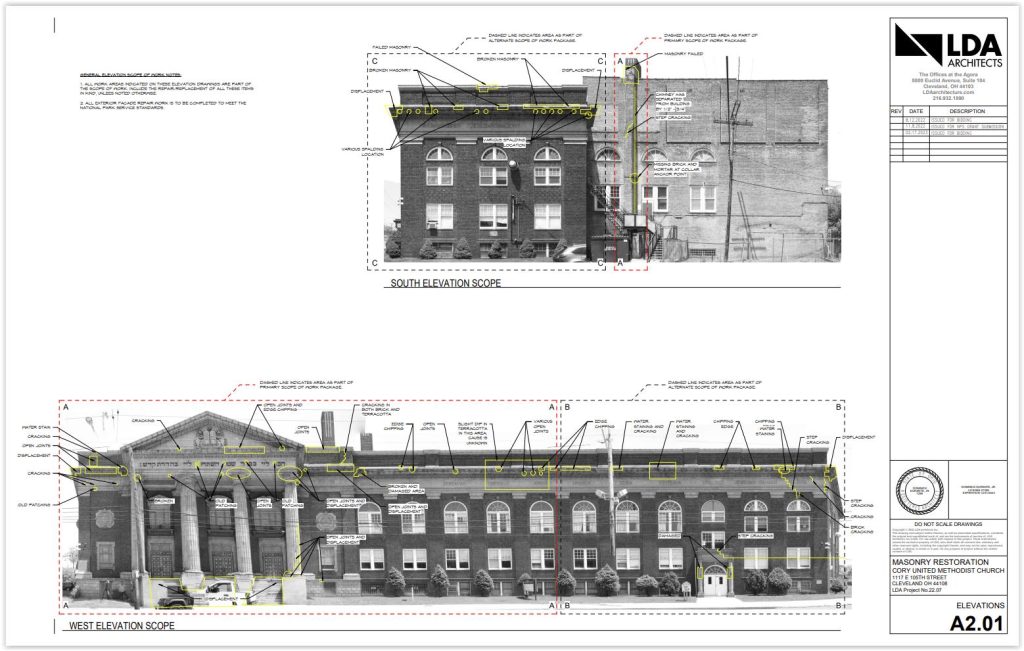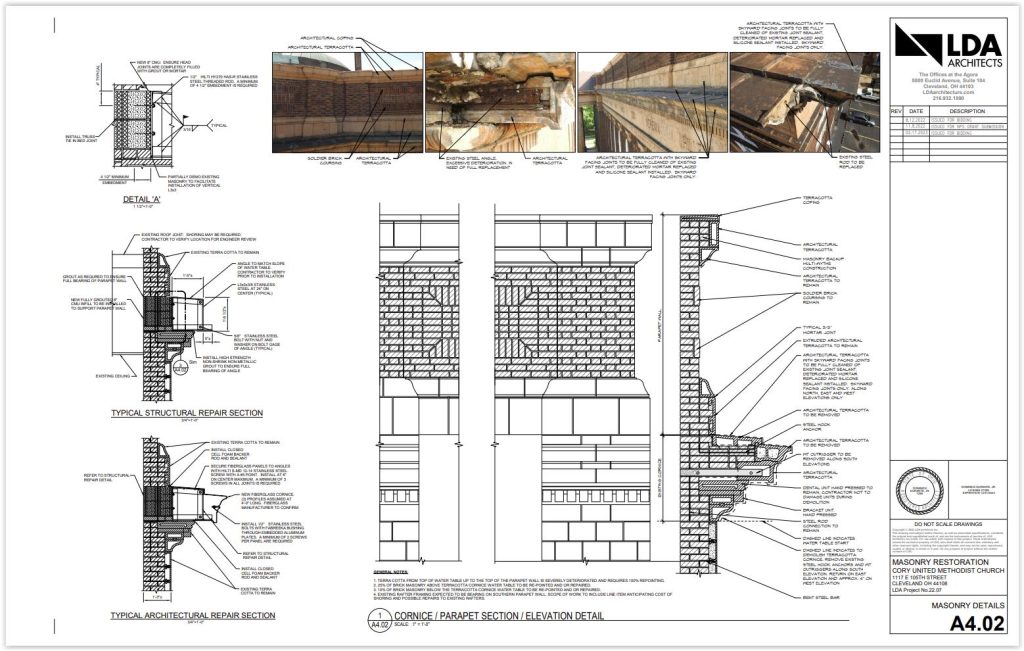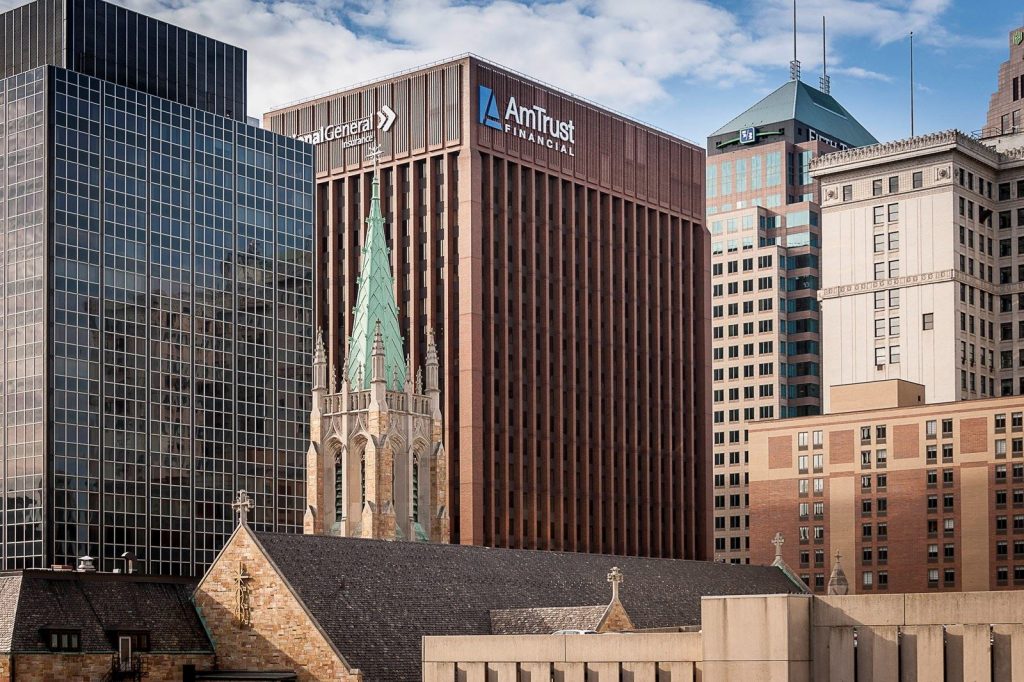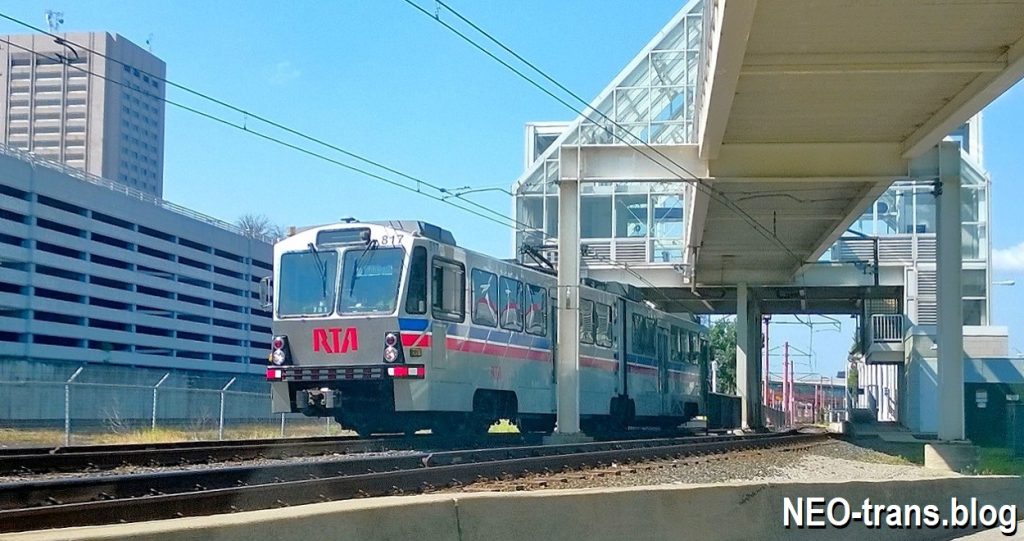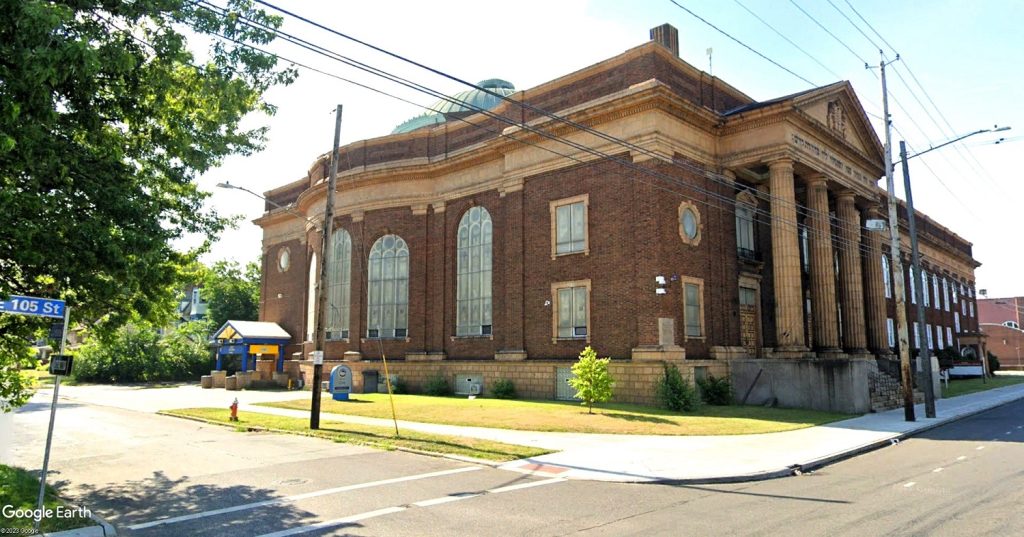
From the far corner of East 105th Street and Drexel Avenue in Cleveland’s Glenville neighborhood, all appears well with Cory United Methodist Church, built as the Park Synagogue. But closer inspections reveal many cracks in and decay to the building’s masonry exterior. Those are about to receive a lot of attention (Google). CLICK IMAGES TO ENLARGE THEM.
East 105th church to undergo major rehab
Cory United Methodist Church (UMC), the first stop on Cleveland’s Civil Rights Trail and a landmark in Cleveland’s Glenville neighborhood for more than 100 years, is about to undergo major repairs to its worn exterior. Thanks to recent grants and donations, the façade of the former Park Synagogue will see significant restoration work to include fiberglass replacements of missing pieces of masonry, repairs of cracked concrete and bricks, plus a rebuild of its columns, cornices, parapets, granite stairs and more. Plans for the repairs were recently submitted to the city.
Located at 1117 E. 105th St., Cory UMC is slated to receive $823,039.50 worth of masonry improvements, according to a building permit application filed with the Cleveland Building Department by project architect LDA Architects of Cleveland. Although the priority is to focus on the East 105th façade and a small area of a rear side, plans shows that damaged brick, concrete, terra cotta and stone work on all sides of the building will ultimately receive attention, restoring the church to its historic beauty. The biggest part of the job will be to rebuild the church’s granite front steps.
The church’s interior is in good condition but won’t remain that way without external repairs, church officials noted. So preparations began in 2020 by the Cleveland Restoration Society (CRS) to help church leaders seek funding for those repairs. A conditions assessment was prepared by the CRS Sacred Landmarks Support Initiative and guided the church in how to prioritize repairs and have a better understanding of how to best approach repairs from a preservation standpoint. This report provided a foundation for the repairs proposed in a federal grant application.
In 2021, the National Park Service’s African American Civil Rights Grant Program awarded a total of $1.4 million to four places in Ohio connected to the Civil Rights movement. The largest allocation from that statewide allocation was $500,000 awarded to stabilizing the exterior of Cory UMC. Additional funding was secured from individual donations and smaller grants. A second grant from this program was awarded in July to Cory UMC’s repairs, amounting to $529,038. This will fund the second phase of repairs.
“This grant from the National Park Service will ensure that the heritage of advocacy and organizing for African American Civil Rights in Glenville and Greater Cleveland will be an enduring legacy,” said church pastor Rev. Gregory Kendrick in a CRS press release. “This first phase of preservation is a step towards partnering with our community to reimagine its future by drawing on its history. We are grateful for this grant award and the opportunity it will create.”
Earlier this year, Lilly Endowment Inc. and the African American Cultural Heritage Action Fund awarded $150,000 to Cory UMC. Out of 1,200 applicants to preserve historic Black churches nationwide, Cory UMC was one of just 35 grant winners. And it got the exact amount the church requested. Kendrick said the funding will help the church hire and keep a preservation director for two years, develop a preservation plan and to help implement that plan.
The company doing the repair work in the coming months is the same one that rebuilt the exterior of West Side Market in Cleveland’s Ohio City neighborhood last year — Coon Restoration & Sealants, Inc. of Louisville, OH, near Canton. The project’s masonry consultant is Frost Building Maintenance Inc. while the civil engineer is Barber & Hoffman Inc.. Both are Cleveland companies.
Listed in April on the National Register of Historic Places, Cory UMC was originally the Park Synagogue for the congregation Anshe Emeth, founded in 1857 by Cleveland’s Jewish Poles. When the synagogue was built in 1920, Glenville was a predominantly Jewish neighborhood. The building’s formal name was Anshe Emeth Beth Tfiloh Synagogue but later was called, simply, The Jewish Center — the largest west of the Allegheny Mountains.
The 62,000-square-foot building contains a 2,400-seat sanctuary, a gymnasium, an indoor pool, and had a branch of the Cleveland Hebrew Schools. But as Cleveland’s Jewish community and members of its orthodox congregation moved to the eastern suburbs in the middle of the 20th century, the Park Synagogue moved with them to Cleveland Heights and later to Pepper Pike.
Cory UMC is one of Cleveland’s oldest African-American churches. It traces its founding to 1875 and the Cory Chapel on East 36th in the city’s Central neighborhood, the city’s first African-American enclave. Cory UMC’s congregation grew over the decades and the church moved several times to bigger quarters each time. In 1946, it bought the Park Synagogue for $135,000 and kept the synagogue’s Hebrew engravings around the top of the building’s East 105th façade. Anshe Emeth members and rabbis return to visit the building to this day.
It was Cleveland’s largest African-American church during campaigns for civil rights in the 1960s. Cleveland was still the nation’s 8th-largest city in 1960. Cory UMC became a must-visit place for civil rights leaders to give speeches and organize campaigns in that decade. One who visited the church multiple times from 1963-1968 was Rev. Martin Luther King Jr.
“Martin Luther King, Jr., spoke at Cory in May 1963,” wrote Donna Tressler in Cleveland Historical. “Traffic came to a standstill for twenty blocks around the church prior to his arrival. During his address to an overflowing crowd, King stated that he had ‘never seen a more aroused response.’ Malcolm X also spoke at Cory on April 3, 1964, giving his famous speech ‘The Ballot or the Bullet.’ In his rousing speech, Malcolm X advised African Americans to exercise their right to vote, but cautioned that if the American government continued to prevent African Americans from attaining full equality, it might be necessary for them to take up arms.”
END

